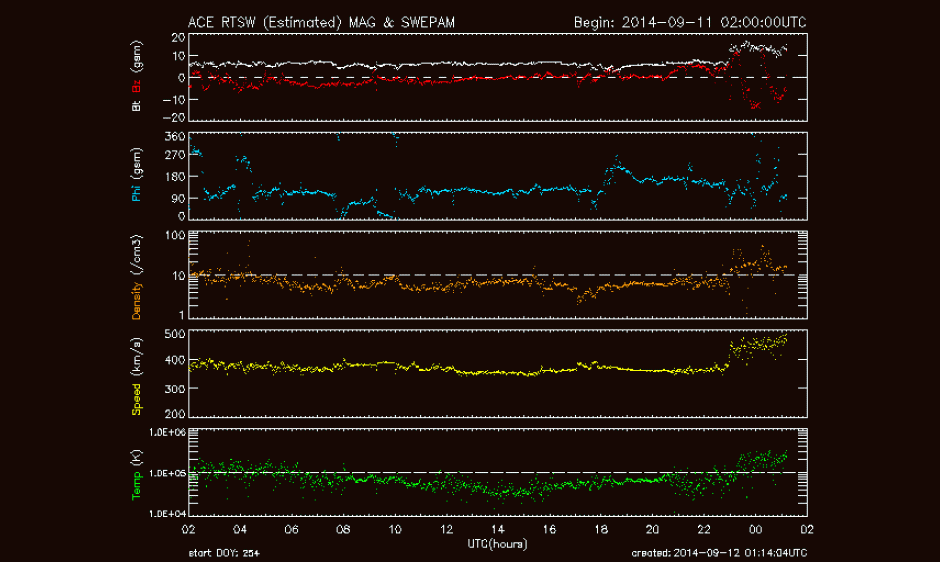
The first of the two CMEs predicted to arrive today made its appearance right on time (shown here as the disturbance near the end of this 24-hour ACE plot, the critical upstream measurement of the solar wind affecting Earth). G1 ((Minor) geomagnetic storming is expected to begin within the next few hours with a maximum projected level of G2 (Moderate) storms for September 12th. A G3 (Strong) Geomagnetic Storm Watch is still in effect for September 13th due to the combined influence of this CME and the one projected to arrive late on the 12th. G1 (Minor) storming is likely to continue into September 14th. In addition, the S1 (Minor) solar radiation storm that is in progress as a result of the eruption on September 10th is expected to persist for the next few days with a possible slight increase with the arrival of the CMEs. Keep in mind that the forecast periods listed are in Universal Time so aurora watchers in the northern U.S. should be looking for possible activity tonight through Saturday night. Stay tuned for updates.